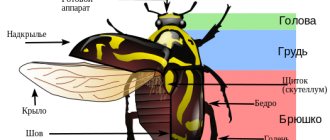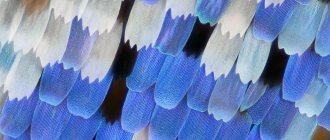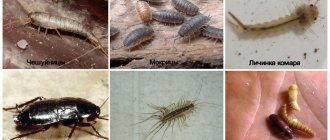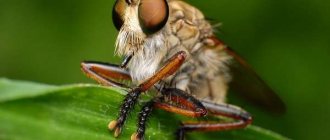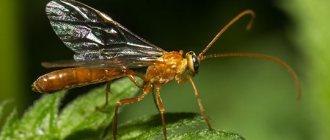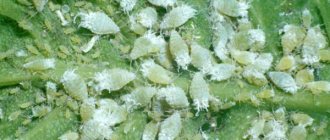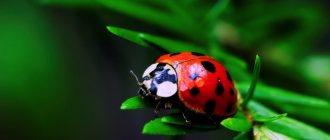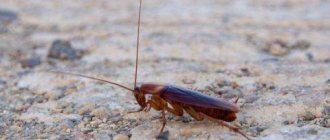The cabbage white butterfly is quite large in size. Males reach 55 mm, females are slightly larger - up to 60 mm in wingspan. Pieris brassicae L. is considered a malicious garden pest that destroys crops of cultivated plants of the Cruciferous family and others. What methods exist to combat these insects? Where do these butterflies live, what do they look like, how do they develop? This and much more is discussed further in the article.
Generations
In the hot season and in the southern regions, as a rule, three generations develop, in the north - two. The first comes out in the southern regions by the end of April-early May, in the northern regions - by the end of May-beginning of June. The more numerous second generation appears in July-August. Butterflies fly until the very end of September. The third generation in the southern regions may mix with the second. However, as a rule, individuals of the third instar spread throughout the plant and live further apart from the rest and may linger until October.
Doll
What does a cabbage butterfly look like in the pupal stage? The color is almost the same as that of the butterfly - yellowish-green with black splashes. When transitioning to the pupal stage, the larva is wrapped in threads somewhat reminiscent of silk, and with them it clings to plants. If the folding into a chrysalis did not occur too late, then a butterfly will soon be born. If the atmospheric temperature does not allow the transformation to occur, then the insect enters the diapause stage and overwinters. With the onset of spring, such insects begin their first generation.
For information, diapause is the process of inhibition of physiological processes in an insect with a transition to the stage of suspended animation. The insect remains in this stage for several weeks. During this period, the pupa molts several times, and this process is called complete metamorphosis.
Development cycle of cabbage whites
Cabbage whites overwinter their pupal stage on tree trunks, bushes, fences, building walls and other surfaces. A short period of time after emergence, individuals begin to lay eggs mainly on the underside of cabbage leaves and other cultivated and weedy garden plants of the Cruciferous family. The females lay eggs in groups of fifteen to two hundred in a pile. After six to thirteen days, caterpillars begin to appear. At first, the young individuals live together. Caterpillars molt four times. The duration of the stage depends on weather conditions. The duration of the cycle is between 13-38 days. An interval of three to seven days is maintained between molts. Pupae become butterflies, on average, after 10-17 days. This new generation lays eggs towards the end of July and beginning of August (in the middle zone). If the crops are not treated and the first emerging individuals are not controlled, then the next ones begin to grow and develop in large numbers. In the southern regions (Central Asia) the pest has three or four, and in some areas (in Transcaucasia, for example) up to five generations.
Prevention
Recommendations to prevent the destruction of crops by whiteweed:
- After the start of insect flight, the area is regularly inspected for the presence of wild cruciferous crops. They must be removed because they attract pests;
- in order to disorient insects, mulch the beds with repellent herbs (plants with a specific odor are used);
- Spray the plants with a solution of birch tar. The procedure is repeated at intervals of 2 weeks;
- The underside of the sheet is periodically inspected in order to identify the masonry in time.
If you follow the recommended sequence of treatments and regularly inspect the plantings, the likelihood of damage to cruciferous plants is reduced to zero. Ignoring the problem is dangerous because caterpillars reproduce quickly.
Area
Cabbage whites are quite widespread throughout Eastern European territory. Representatives of the species can also be found in the temperate zone of Asia, in the eastern regions to Japan, as well as in North Africa. In 1993, the penetration of individuals into the territory of Southern Primorye was noted. Cabbage whites were introduced to Panama and Chile. In areas located north of the Arctic Circle, you can find mainly migrant individuals. The favorite places of representatives of the species are roadsides, forest edges, parks, gardens, clearings, forest belts along the railway track. Cabbage grass is also often found in populated areas where there are cultivated cruciferous plants. It should, however, be said that the geographic distribution of the butterfly is limited by temperature conditions. Thus, wintering pupae die at -20 degrees in fairly large numbers. The optimal temperature for the growth of individuals is considered to be 20-26 degrees above zero. In too hot a climate (more than 35-38 degrees), the development of cabbage whites slows down or it dies. The pest is very widespread throughout Russia, except, perhaps, in the regions of Siberia and the Far North. There, its presence and development is complicated by fairly low temperatures and harsh climatic conditions.
Description
The cabbage white has white wings. The front corners are painted black, and the rear corners have a dark stroke on the leading edge of the surface. Females have distinctive features. In particular, there are two rounded black spots on their front wings. The eggs are yellow and bottle-shaped. Their height is about 1.25 mm. Longitudinal ribs are visible on the surface of the eggs. Gray-green sixteen-legged caterpillars have dark brown spots and dots on their bodies, which are grouped into relatively even transverse rows. There are yellow stripes (lighter on the back than on the sides) along the sides of the body and along the back. The caterpillar's body is covered with hairs and bristles. The head of juveniles is black, while in adults it is covered with light spots. The length of the caterpillar can reach up to 35-40 mm. Individuals of the first instar are light green in color, and their body is covered with black warts. The pupa has an angular shape, greenish-yellow color, and black dots on the sides and back.
Appearance
The common cabbage plant goes through several stages of development in its life cycle. An adult butterfly is called an imago. It has a small elongated body, a clearly defined head with eyes located on it, mouthparts, and long antennae. 3 pairs of legs help her maintain a stable balance position.
The decoration of the cabbage insect are large wings of a milky or white color with a noticeable darkening along the edge. The upper wing of females has a dark upper corner and two black spots in the middle. The upper edge of the lower wing is decorated with one spot. The lower wings of the female have a yellow tint.
The description of the cabbage butterfly is very similar to the appearance of another representative of the white butterfly family - the turnip. This butterfly also has white wings with black dots, but is smaller in size than the cabbage pest.
Males have almost snow-white wings with the same darkened corner. The spot is present only on the lower wings in the same place as on females. The wingspan of both sexes is 50-60 mm. Photos of the cabbage butterfly clearly demonstrate external differences and will help determine the sex of the insect.
Nutrition
Cabbage whiteweed eats cruciferous plants. Young caterpillars, being together for the first time, feed on the pulp from the lower part of the leaves, leaving the upper skin. Then the individuals spread throughout the plant. Cabbage grass begins to eat leaves mainly from the edges, adult caterpillars crawl to the upper surface. They gnaw the flesh, leaving only the rough veins. Butterflies prefer to fly during the daytime. They feed (except for the pulp of leaves) on plant nectar. Large concentrations of individuals can be found in areas protected from the wind and located near fences and tree plantations. In large areas sown with cabbage, the pest, as a rule, settles along the edges of the field.
How to get rid of cabbage?
There are different methods to combat cabbage whites: you can use special preparations, make traps, treat cruciferous vegetables with prepared decoctions, or plant strong-smelling plants nearby. Each method has its own advantages and disadvantages.
If there are not many cabbage plants in the garden, then it is enough to limit yourself to traditional methods of control or biological preparations, but if the pest has infested the entire garden, then it is probably impossible to do without pesticides.
If you are going to use self-prepared decoctions or special pesticides that need to be sprayed on plants, it is recommended to carry out this procedure in the morning, when there is no wind or precipitation.
It is important to treat the leaves well on the underside, since this is where the egg-laying plants and caterpillars are located.
Cabbage (Pieris brassicae)
Anti-cabbage preparations
An effective method of pest control is the use of special preparations. Of course, it is better to give preference to biological products, since they have a safe composition. But if cabbage is widespread, it is recommended to use toxic insecticides.
Insecticides
As already mentioned, chemicals are dangerous to humans, so they should be used strictly according to the instructions, and also do not forget to use personal protective equipment (gloves, face mask).
In addition, they can only be used during the period of leaf formation, since the use of chemicals in a later period risks the accumulation of toxic substances in the plants.
Popular remedies against cabbage are “Kinmiks”, “Iskra”, “Borey”, “Fufanon”, etc.
Biological products
Biological products will be safer. They can be used throughout the growing season; use should be discontinued immediately before harvesting.
The most popular are the following biological products: “Fitoverm”, “Bitoxibacillin”, “Baksin”, “Lepidotsid”, “Aktellik”, etc.
Traditional methods of fighting cabbage
The advantages of traditional methods of control are safety and cost-effectiveness, so many people prefer to fight pests in this way.
A simple and quick method to get rid of cabbage grass is to use dry tobacco dust. It should be applied to the leaves of cruciferous plants.
Traps
An easy way to reduce butterfly populations is to make sweet traps. To do this, you need to take a regular plate, a disposable cup, or cut off a plastic bottle and put the bait. Something sweet, for example, jam or syrup, is suitable as bait. First, add several tablets of brewer's yeast to the bait.
The trap must be placed in the garden bed or between the rows. The trap needs to be cleaned periodically, as pests will accumulate in it.
The disadvantage of traps is that they will catch not only cabbage weeds, but also other insects, including beneficial ones.
Recipes for infusions for spraying plants
An effective way to get rid of cabbage grass is to spray the plants with a specially prepared infusion.
Below are some recipes for decoctions against cabbage whites:
- Pour 200 g of pine or spruce branches, cones, pine needles into 2 liters of boiling water. Infuse for a week. Strain, dilute with 10 liters of water.
- Add 100 g of mustard powder to 10 liters of hot water and leave for a couple of days. Add the infusion to the water in a 1:1 ratio.
- Place 800 g of freshly cut potato tops in a bucket, add 10 liters of water. Leave to infuse for 3-4 hours. Strain, add 50 g of soap.
- Add 2 tablespoons of salt to a bucket of water. Dissolve the salt thoroughly.
- Dissolve a bottle of pharmaceutical valerian in 3 liters of water. Use immediately after preparation.
- Fill 1/3 of the bucket with crushed burdock leaves, add water. Leave to infuse for 3-4 days.
- 1 kg of dried wormwood, chop it and boil for 15 minutes in a small amount of water. Let the broth cool. Dilute it with 10 liters of water.
- Dissolve 50 ml of ammonia in 10 liters of water. Use immediately after preparation.
- Take 1 kg of dried chamomile for 10 liters of water. Leave for 12 hours, strain, add 20 liters of water and 100 g of soap.
Pest control methods. Parasitic insects
There are various ways to destroy cabbage whites. In particular, one of the most effective ones is parasitic insects. Of particular importance is the small-bellied ichneumon ichneumon, which lays eggs in the body of young caterpillars, sometimes up to a dozen per individual. Larvae emerge from the eggs. They feed on the body tissues of caterpillars, leading to their death. Infected individuals initially develop normally, but then become less and less mobile, acquiring a yellowish tint. Upon reaching a certain age, the parasites begin to bore into the caterpillar's body, crawling out. Near the dying individual, they begin to weave their cocoons, in which they pupate and then turn into adult parasites. Research has shown that the wasp could infect up to 90% of cabbage weeds. In this regard, in order to effectively combat a garden pest in the process of manual collection of caterpillars, it is necessary to leave cocoons of parasites for subsequent reproduction in the natural environment, or to collect and transfer them to the places most populated by caterpillars.
What harm is done to a person?
Unlike the white butterfly, the larval form of insects is more dangerous. The caterpillar destroys plant shoots. First, the larvae live on the inside of the leaves, then move to the upper part. You can catch the cabbage butterfly caterpillar on cabbage, radish, and mustard. In addition, it is found on plants such as horseradish and turnips. This is the favorite food of such pests.
In addition to the harmful effects on vegetation, the larvae create other problems. Thus, they secrete special substances that irritate human skin. The white caterpillar is also dangerous for birds; birds often die when they eat it.
other methods
The reproduction and development of the butterfly is significantly hampered by various diseases. For example, a bacterial culture of wax moth is often used, which provokes illness and subsequent death of caterpillars. Flycheria is of particular importance among bacteriological pathologies. Caterpillars affected by it stop growing, become lemon-yellow in color and quickly die. Inside, the tissues of the infected individual turn to mush. One of the races of Trichogramma (egg eater) may also appear in white eggs.
One of the simplest methods for exterminating white butterflies is considered to be regular inspection of the lower surface of the leaves of cruciferous plants and crushing of the laid eggs. Manual collection of caterpillars and their destruction is used. In addition, quite a lot of insecticidal preparations are produced today. They are used to spray the future crop at the beginning of the season to prevent the appearance of pests, as well as at their first appearance to destroy young individuals. Treatment of plants prevents further growth of caterpillars and protects crop leaves from damage.
Caterpillar
The cabbage butterfly caterpillar appears around the end of the first or second week, the period depends on the atmospheric temperature.
The butterfly begins laying eggs on days 5–7 from the first day of summer. She lays yellow eggs in large groups. To prevent them from being damaged, the butterfly places them on the bottom of the leaf. There can be up to 300 eggs on one leaf.
Larvae emerge from eggs quite quickly, around day 16. The babies look very similar to worms. The caterpillar is yellowish-greenish in color with black spots. It has three pigments: green, black and white. Depending on where she lives, the color changes somewhat. For example, if it lives on light leaves, then the pigment becomes lighter and darkens in the dark. The largest individuals reach 3.5 centimeters.
At first, as soon as the small caterpillars hatch, they stay in the same heap as they were when laid, until they get stronger, and only then spread out. Most often they settle on the lower part of the leaves and actively eat them. Larvae that hatch late settle on the top of the leaf and can climb inside the cabbage head or stem.
The butterfly stays in the pupal stage from 14 to 40 days. For normal growth and development, the caterpillar requires a temperature of +20 to +25 degrees. If it is very hot and there is also a lot of rain, the larvae will die en masse.

